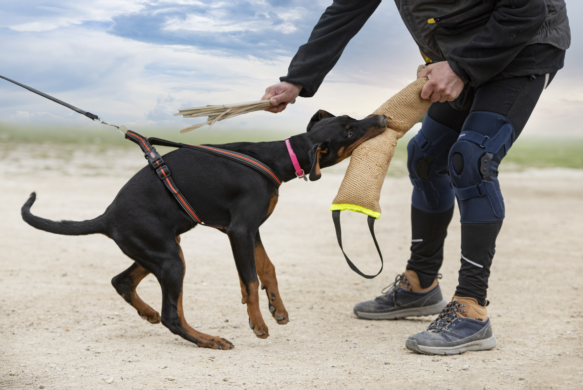
blog address: https://www.vonultimatedogshop.com/
blog details: Owning a dog brings immense joy and companionship, but it also comes with responsibilities, one of which is proper training. Training your furry friend is essential for their safety, well-being, and your peace of mind. However, effective training requires the right equipment. With a plethora of options available in the Australian market, choosing the best dog training equipment can be overwhelming. This comprehensive guide aims to simplify the process, helping you make informed decisions to ensure successful training for your canine companion.
Understanding Your Dog's Needs
Before delving into the world of dog training equipment, it's crucial to understand your dog's specific needs and temperament. Factors such as breed, size, age, energy level, and personality play a significant role in determining the most suitable training tools. For instance, a small, timid dog may require gentler methods and lightweight equipment, while a large, energetic breed might benefit from more robust gear designed for strength and durability.
Essential Dog Training Equipment
1. Collars and Harnesses:
- Traditional Collars: Basic collars are commonly used for identification and leash attachment. They come in various materials such as nylon, leather, or fabric.
- Martingale Collars: Ideal for dogs with narrower heads or those prone to slipping out of traditional collars, martingale collars provide gentle control without choking.
- Head Halters: Designed to gently guide the dog's head, head halters offer effective control over pulling behaviors.
- Harnesses: Unlike collars, harnesses distribute pressure more evenly across the dog's body, reducing strain on the neck and preventing choking. Options include back-clip, front-clip, and no-pull harnesses.
2. Leashes:
- Standard Leashes: Typically made of nylon or leather, standard leashes come in various lengths and widths to suit different training needs.
- Retractable Leashes: Offering adjustable length, retractable leashes provide freedom of movement while still maintaining control. However, they may not be suitable for leash training or teaching leash manners.
3. Training Treats:
- High-Value Treats: Use tasty, bite-sized treats to motivate and reward your dog during training sessions. Opt for treats that are nutritious and easily digestible.
- Treat Pouch: A convenient accessory for storing and dispensing treats during training sessions, keeping them readily accessible.
4. Clickers and Whistles:
- Clickers: Clicker training utilizes a small device that emits a distinct clicking sound to mark desired behaviors, followed by a reward. It helps reinforce positive associations and precise timing.
- Whistles: Whistles can be used for recall training and long-distance communication. Choose a whistle with adjustable frequencies for versatility.
5. Training Toys:
- Interactive Toys: Incorporate interactive toys such as treat-dispensing balls or puzzles into training sessions to engage your dog's mind and encourage problem-solving skills.
- Tug Toys: Tug-of-war games can be used as a reward for obedience training and to build a stronger bond with your dog.
Factors to Consider When Choosing Dog Training Equipment
1. Quality and Durability:
- Invest in high-quality, durable equipment that can withstand daily use and the wear and tear of training sessions. Look for reputable brands known for their reliability and longevity.
2. Safety:
- Prioritize your dog's safety by choosing equipment that is designed with their comfort and well-being in mind. Avoid sharp edges, choking hazards, or materials that could cause irritation or injury.
3. Fit and Comfort:
- Ensure proper fit and comfort for your dog by selecting equipment that is appropriately sized and adjustable. Avoid anything too tight or restrictive that could cause discomfort or restrict movement.
4. Training Method Compatibility:
- Consider the training methods you plan to use and choose equipment that complements your approach. For example, if you prefer positive reinforcement training, opt for tools like clickers and treats.
5. Breed and Size:
- Take into account your dog's breed and size when selecting equipment. What works for a small, delicate breed may not be suitable for a large, powerful one. Choose gear that is appropriate for your dog's specific needs and characteristics.
6. Ease of Use:
- Select user-friendly equipment that is easy to handle and operate, especially if you are new to dog training. Complicated or cumbersome tools may hinder your training progress.
Conclusion
Choosing the best dog training equipment in Australia is essential for effective and humane training practices. By understanding your dog's needs, investing in quality gear, and considering factors such as safety, fit, and training method compatibility, you can set yourself and your furry friend up for success. Whether you're teaching basic obedience commands, addressing behavioral issues, or engaging in fun activities, the right equipment can make all the difference in achieving your training goals and fostering a strong bond with your canine companion.
keywords:
member since: Feb 20, 2024 | Viewed: 151